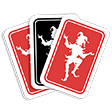Chess Game is a timeless board game that has captivated players for centuries. With its strategic depth and rich history, chess provides a challenging and engaging experience for players of all ages. In this article, we will provide you with comprehensive instructions, rules, and an activity guide to help you master the art of chess.
Chessboard Setup
The chessboard consists of 64 squares arranged in an 8×8 grid. Each player begins with 16 pieces: one king, one queen, two rooks, two knights, two bishops, and eight pawns. The board should be placed between the players in such a way that each player has a white square in the bottom right corner.

Piece Movements
1. King
The king can move one square in any direction.
2. Queen
The queen can move any number of squares in any direction (horizontally, vertically, or diagonally).
3. Rook
The rook can move any number of squares horizontally or vertically.
4. Knight
The knight moves in an L-shape: two squares in a straight line, and then one square perpendicular to that.
5. Bishop
The bishop can move any number of squares diagonally.
6. Pawn
Pawns move forward one square, but capture diagonally. On their first move, they can choose to move two squares forward.
Objective
The objective of the game is to checkmate your opponent’s king. Checkmate occurs when the king is in a position to be captured (in “check”) and there is no legal move to escape capture. The player who checkmates their opponent’s king wins the game.
Gameplay
Chess is a turn-based game, with players taking alternating moves. The player controlling the white pieces moves first, followed by the player controlling the black pieces. During each turn, a player can move one of their pieces according to its allowed movement patterns.

Special Moves
1. Castling
This move involves the king and a rook. It can only be done if neither the king nor the rook has moved before and if there are no pieces between them. Castling is done by moving the king two squares towards the rook, and then placing the rook on the square adjacent to the king on the opposite side. It is a useful move for king safety and connecting rooks.
2. En Passant
If an opponent’s pawn moves two squares forward from its starting position and lands beside your pawn, you have the option to capture it “en passant,” as if it had only moved one square forward. This move must be done immediately after the opponent’s pawn advances.
3. Promotion
When a pawn reaches the opposite end of the board, it can be promoted to any other piece (except a king). The player can choose to promote the pawn to a queen, rook, bishop, or knight. The promoted piece replaces the pawn on the board.
Stalemate and Draw
A stalemate occurs when the player to move has no legal move available, but their king is not in check. In this situation, the game ends in a draw. Additionally, a draw can occur if both players agree to it, if there is insufficient material to checkmate (e.g., king versus king), or if the same position is repeated three times (known as threefold repetition).
Chess Activity Guide
1. Study Famous Games
Analyze and study games played by renowned chess players throughout history. This will give you insights into different strategies, tactics, and positional concepts employed by masters of the game. Some notable games to explore include the “Immortal Game” played between Adolf Anderssen and Lionel Kieseritzky and the “Game of the Century” played between Bobby Fischer and Donald Byrne.
2. Play Online
Take advantage of online chess platforms and play against opponents from around the world. This will not only improve your skills but also expose you to various playing styles and techniques.
3. Join a Chess Club
Joining a local chess club or community can provide you with opportunities to play against experienced players, participate in tournaments, and engage in chess discussions. It’s a great way to immerse yourself in the chess community and learn from fellow enthusiasts.
4. Learn from Tutorials and Videos
There are numerous tutorials, instructional videos, and online courses available that can help you improve your understanding of chess strategies, tactics, and endgame techniques. Many renowned players and chess coaches provide valuable insights through these resources.
5. Analyze Your Games
After playing a game, take the time to analyze it. Identify your mistakes, missed opportunities, and areas for improvement. This self-reflection will help you learn from your experiences and refine your playing style.
See More : Asalto Board Game: Rules and Instructions for How to Play
By following these instructions, rules, and engaging in the suggested activities, you can embark on a fulfilling chess journey. Chess is not only a game but also an art form that rewards critical thinking, strategic planning, and creativity. So, gather your chessboard, pieces, and an opponent, and let the intellectual battle commence!




